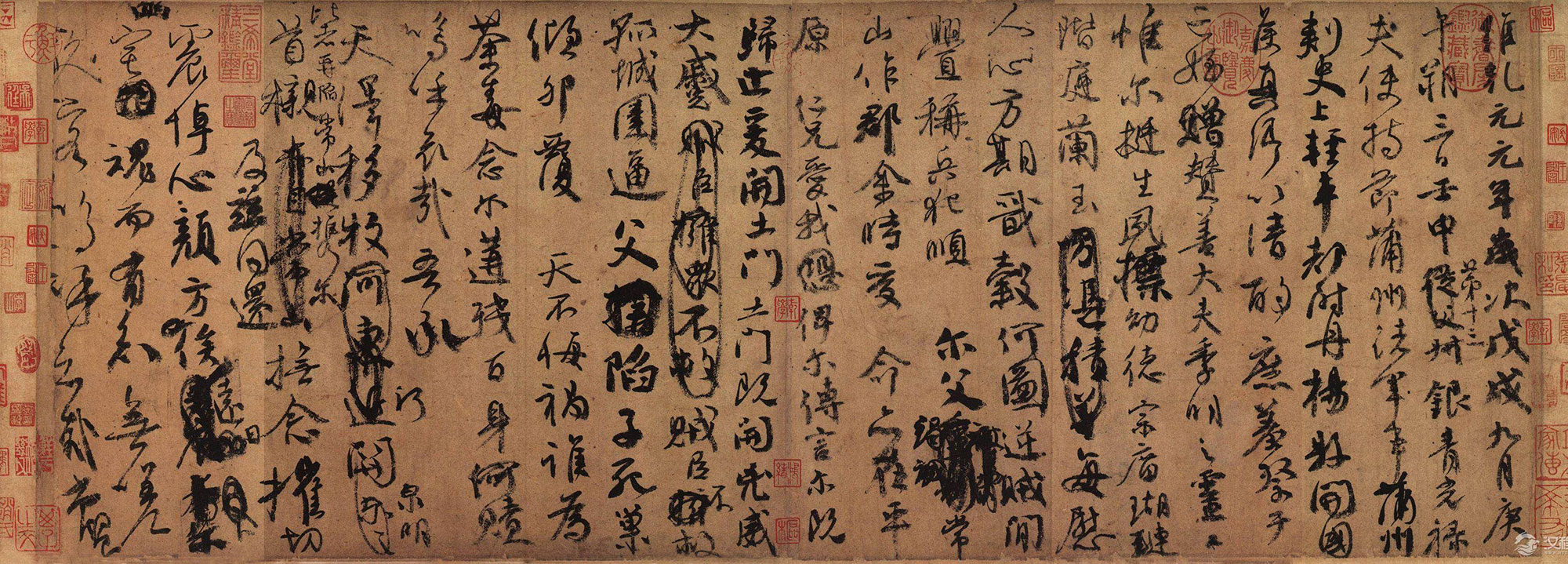A Letter to my Nephew: A Raw and Unfiltered Expression of Grief
|
"A Letter to my Nephew," or Ji Zhi Wen Gao, by Yan Zhenqing (颜真卿), is a unique piece of calligraphy in that it was not intended to be an artistic masterpiece. Rather, it is a draft of a letter expressing his grief and sorrow at the loss of his nephew. However, this raw and unfiltered expression of emotion is what makes the work so powerful and enduring. Written in a mix of Running Script (xingshu) and Cursive Script (caoshu), Ji Zhi Wen Gao reveals the artist's inner turmoil and his capacity for emotional expression. It is a unique, personal, and emotional piece.
The calligraphy of Ji Zhi Wen Gao is characterized by its spontaneous and uninhibited brushwork. The strokes are rough, irregular, and often hurried, reflecting the calligrapher's emotional state of grief and distress. The characters sometimes flow into each other, and the lines are at times thick and bold and other times thin and delicate. These variations convey the raw power of the artist’s feelings as well as the lack of formal consideration of the piece. The composition is far from formal or structured, and there is a feeling of urgency and immediacy to the piece. The characters are not always aligned, and the spacing between lines is inconsistent, adding to the sense of emotional turmoil. The brushstrokes are not carefully controlled or stylized; they seem to be driven by raw emotion. It’s precisely this spontaneity and imperfection that give the letter its unique power. Ji Zhi Wen Gao is unique in that it was not intended as a finished or polished work of art. Rather, it is a draft of a personal letter, written in the heat of the moment. Yet, it’s the very fact that the calligrapher did not aim for perfection that reveals a genuine expression of personal grief. The calligraphy is a direct reflection of the calligrapher’s emotional state, and the raw honesty of the letter is what makes it such a powerful piece. "A Letter to my Nephew" is more than just a piece of calligraphy; it is a testament to the power of human emotion and its capacity to be expressed through art. The piece’s value doesn’t lie in its refined technique or stylistic perfection; instead, it lies in the raw and unfiltered expression of grief that resonates with viewers to this day. It’s a compelling reminder of the deep and personal aspects of calligraphy, showing the capacity to use the art form for heartfelt communication. |
Related information
- The Use of Different Papers for Running Script
- Running Script in Comparison to Other Chinese Scripts
- Running Script and the Use of "Varied Ink Density"
- Running Script and Its Influence on Other Art Forms
- Running Script and the Pursuit of "Authenticity"
This article emphasizes the importance of paper selection in Running Script, detailing how different types like rice, mulberry, or bamboo offer unique textures, absorbency levels, and colors which impact the ink’s expression and overall composition.
This article compares Running Script with Regular Script and Cursive Script, highlighting its unique position as a bridge between the two, as well as comparing it to Semi-Cursive, and emphasizing the diverse range within Chinese calligraphy.
This article explores the importance of varied ink density in Running Script, highlighting how the manipulation of ink concentration allows calligraphers to create a range of expressive effects, from light and delicate to dark and powerful strokes.
This article explores the influence of Running Script on other Chinese art forms like painting, seal carving, and even architecture, showcasing its far-reaching impact on Chinese artistic expression.
This article explores the concept of zhen (真), or “authenticity,” in Running Script, highlighting the calligrapher’s commitment to expressing their true self, emotions, and unique vision with honesty and openness.
